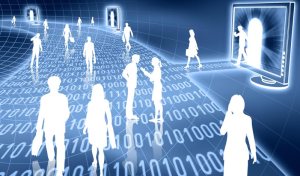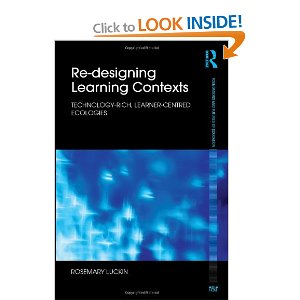- When
- Thursday, March 24, 2016 from 1:00 PM to 4:00 PM (GMT)
- Where
- UCL Knowledge Lab – UCL Institute of Education 23- 29 Emerald Street , London WC1N 3QS, United Kingdom – View Map
What the Research Says about How AI Benefits Education
March 24, 2016 — Prof. Rose LuckinHere is what ‘smart’ looks like in an AI tutor
March 17, 2016 — Prof. Rose Luckin
So, what would a piece of education technology driven by AIEd look like? Here is a simplified picture of a typical model-based adaptive tutor.
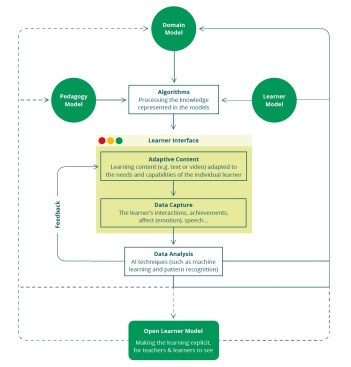
It is based on the three core models as described above: the learner model (knowledge of the individual learner), the pedagogy model (knowledge of teaching), and the domain model (knowledge of the subject being learned and the relationships between the different parts of that subject matter). AIEd algorithms (implemented in the system’s computer code) process that knowledge to select the most appropriate content to be delivered to the learner, according to their individual capabilities and needs.
While this content (which might take the form of text, sound, activity, video, or animation) is being delivered to the learner, continuous analysis of the learner’s interactions (for example, their current actions and answers, their past achievements, and their current affective state) informs the delivery of feedback (for example, hints and guidance), to help them progress through the content they are learning. Deep analysis of the student’s interactions is also used to update the learner model; more accurate estimates of the student’s current state (their understanding and motivation, for example) ensures that each student’s learning experience is tailored to their capabilities and needs, and effectively supports their learning.
Some systems include so-called Open Learner Models, which present the outcomes of the analysis back to the learners and teachers. These outcomes might include valuable information about the learner’s achievements, their affective state, or any misconceptions that they held. This can help teachers understand their students’ approach to learning, and allows them to shape future learning experiences appropriately. For the learners, Open Learner Models can help motivate them by enabling them to track their own progress, and can also encourage them to reflect on their learning.
One of the advantages of adaptive AIEd systems is that they typically gather large amounts of data, which, in a virtuous circle, can then be computed to dynamically improve the pedagogy and domain models. This process helps inform new ways to provide more efficient, personalised, and contextualised support, while also testing and refining our understanding of the processes of teaching and learning.
In addition to the learner, pedagogical, and domain models, AIEd researchers have also developed models that represent the social, emotional, and meta-cognitive aspects of learning. This allows AIEd systems to accommodate the full range of factors that influence learning. Taken together, this set of increasingly rich AIEd models might become the field’s greatest contribution to learning.

This post is an adapted extract from Intelligence Unleashed published by Pearson.
Annotation may be old-fashioned, but it is effective for learning and can be supported with technology
March 11, 2016 — Prof. Rose Luckin When I was at school and university I spent a lot of time taking notes. These notes were sometimes much better than others, but they were always invaluable for revision – even if only to identify the gaps in my knowledge.
When I was at school and university I spent a lot of time taking notes. These notes were sometimes much better than others, but they were always invaluable for revision – even if only to identify the gaps in my knowledge.
I still take notes, in meetings and at talks, for example. Increasingly these notes are technology based and much more structured than those of my youth. In fact, part of the reason I blog is to help myself remember key findings and issues as well as to flag them up for others. Another of the 19 learning acts that I have been discussing is:
Annotation. This can be described as an interaction with existing knowledge material (particularly text) such that the learner is able to construct a personal elaboration of that material. This might take the form of elaborative commentary closely attached to the original (“marginal notes”) or it might be a form of personal précis or reflection (“summarising” etc.). Knowledge is thereby elaborated or personalised.

This practice suits situations where a body of well-formed material is available for study. Its cognitive benefit arises from the effort of actively re-casting material and selectively linking it with existing knowledge. Clearly annotation is something that can be done more or less skilfully and demands practice and support.

Technology can structure annotation as well as providing an infrastructure for composition and storage. There are many tools for writing and filing the results of annotation and a whole range of practices for organisation.
Educational AI can know about teaching, learners, and subjects like math or history.
March 8, 2016 — Prof. Rose LuckinI said in AI in Education provides smart knowledge modeling tools that AIEd systems build computational models of the process of teaching, the subject matter being studied and of the learner as they progress. The table below provides some examples of the sorts of information that can be stored in the Pedagogical model, the Domain model and the Learner model.

To delve deeper into just one of these examples, learner models are ways of representing the interactions that happen between the computer and the learner. The interactions represented in the model (such as the student’s current activities, previous achievements, emotional state, and whether or not they followed feedback) can then be used by the domain and pedagogy components of an AIEd programme to infer the success of the learner (and teacher). The domain and pedagogy models also use this information to determine the next most appropriate interaction (learning materials or learning activities). Importantly, the learner’s activities are continually fed back into the learner model, making the model richer and more complete, and the system ‘smarter’.
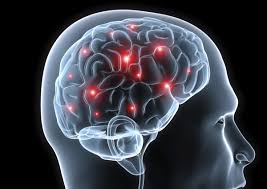
This post is an adapted extract from Intelligence Unleashed published by Pearson.
Strategic browsing can support learning, but many learners do not have the requisite skills
March 3, 2016 — Prof. Rose LuckinI want to return to the 19 Learning Acts that have been observed to occur when students are learning with digital media and to consider the act of Browsing.
A while ago I wrote about the OECD report into 15-year-olds’ educational attainment in maths, reading, science and digital skills. The negative message from this report was that less use of the internet is linked to better reading performance and frequent use of technology in school is linked to lower performance. BUT digging deeper into the data revealed that what students most commonly do with computers is dominated by browsing the internet, with 42% of students doing this once a week or more. When students did schoolwork at home, once again browsing was the most popular activity.
So what is browsing and how can it be more effective?
Browsing is an interaction with knowledge structures whereby the learner searches for relevant items. This search may be improvised and opportunistic: this is the more traditional sense of “browsing” OR it can be guided by principled rules in which case we would call it “strategic” browsing. It is fine for learners to take part in some exploration through unguided browsing, but it is essential that educators also help learners to develop the skills necessary to become more strategic.
The sorts of skills needed can be found in many accounts of 21st Century skills, for example, that proposed by the World Economic Forum. These include critical thinking and persistence, both of which would help learners to be more strategic in their browsing, particularly if we add in a good dose of meta cognition. Critical thinking and meta cognitive skills can be taught and they have been show to support learning.
Artificial Intelligence in Education provides smart knowledge modeling tools.
March 1, 2016 — Prof. Rose LuckinAt the heart of AI in Education (AIEd) is the scientific goal to “make computationally precise and explicit forms of educational, psychological and social knowledge which are often left implicit.” In other words, in addition to being the engine behind much ‘smart’ ed tech, AIEd is also a powerful tool to open up what is sometimes called the ‘black box of learning,’ giving us deeper, and more fine-grained understandings of how learning actually happens (for example, how it is influenced by the learner’s socio-economic and physical context, or by technology). These understandings may then be applied to the development of future AIEd software and, importantly, can also inform approaches to learning that do not involve technology.

For example, AIEd can help us see and understand the micro-steps that learners go through in learning, or the common misconceptions that arise. These understandings can then be used to good effect by classroom teachers. AI involves computer software that has been programmed to interact with the world in ways normally requiring human intelligence. This means that AI depends both on knowledge about the world, and algorithms to intelligently process that knowledge.
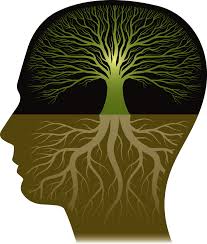
This knowledge about the world is represented in so called ‘models’. There are three key models at the heart of any AIEd application: the pedagogical model, the domain model, and the learner model. Take the example of an AIEd system that is designed to provide appropriate individualised feedback to a student. Achieving this requires that the AIEd system knows something about:
• Effective approaches to teaching (which is represented in a pedagogical model);
• The subject being learned (represented in the domain model);
• The student (represented in the learner model);
In my next post I’ll provide examples of the sorts of information that can be found in each of these models.
This post is an adapted extract from Intelligence Unleashed published by Pearson.
